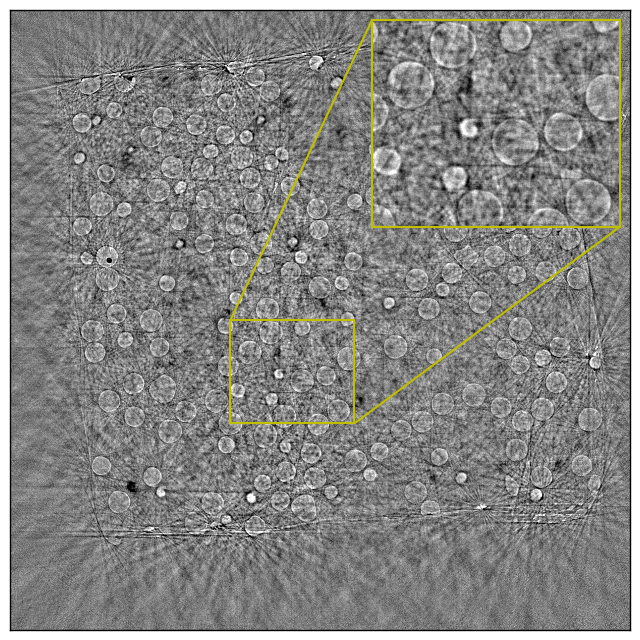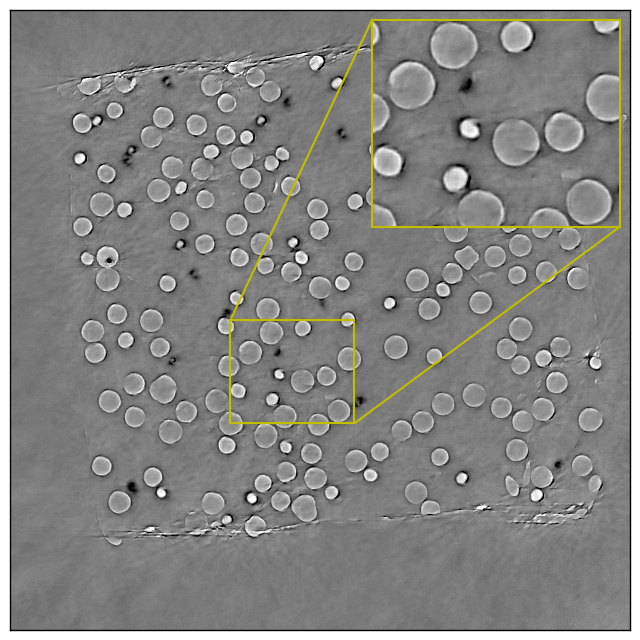Paper: arXiv:1902.07582; arXiv:1910.04081 Relevant presentation
An image quality enhancement model based on generative adversarial networks originally developed for synchrotron X-Ray tomography. It has also been used for other case like streaming tomography, the joint ptycho-tomography problem. We also developed a workflow to deploy TomoGAN on Coral edge TPU (arXiv:1911.05878) which can process an image with 1k x 1k pixels in 500ms.
I (Zhengchun Liu), also implemented the generator model based on pure Intel DNNL (MKL-DNN) and NVIDIA cudnn seperately for inference, using C++, so that you can easily integrate it in your C++ project. I will open source them soon.
To give it a try:
-
download sample dataset and the ImageNet pretrained vgg model from Here
-
install dependencies, Tensorflow(preferably 1.13)
-
run with python ./main-gan.py -gpu 0 -expName test -xtrain dataset/noisy4train.h5 -ytrain dataset/clean4train.h5 -xtest dataset/noisy4test.h5 -ytest dataset/clean4test.h5
Note: with the sample dataset (128 images for training) provided here, you may not reproduce our results because we used a much larger dataset that has 2048 images. You may download the X-ray projection from TomoBank and make a reconstruction using all the projections as ground truth and a subsampled projections (every 32) as (low dose) noisy input. The dataset we provided, both norml dose (all projections) and low-dose (1/32 subsampled), were reconstructed using SIRT algorithms with 100 iterastions.
If you use this code for your research, please cite our paper(s):
@inproceedings{liu2019deep,
title={Deep Learning Accelerated Light Source Experiments},
author={Zhengchun Liu and Tekin Bicer and Rajkumar Kettimuthu and Ian Foster},
year={2019},
booktitle={2019 IEEE/ACM Third Workshop on Deep Learning on Supercomputers (DLS)}
}
@misc{liu2019tomogan,
title={TomoGAN: Low-Dose X-Ray Tomography with Generative Adversarial Networks},
author={Zhengchun Liu and Tekin Bicer and Rajkumar Kettimuthu and Doga Gursoy and Francesco De Carlo and Ian Foster},
year={2019},
eprint={1902.07582},
archivePrefix={arXiv},
primaryClass={cs.CV}
}
As an example / teaser, a pair of noisy input and its denoised output are shown as follows,
An example input (a low-dose X-ray tomographic image ):
The corresponding output (i.e., denoised using TomoGAN):
Video clips


